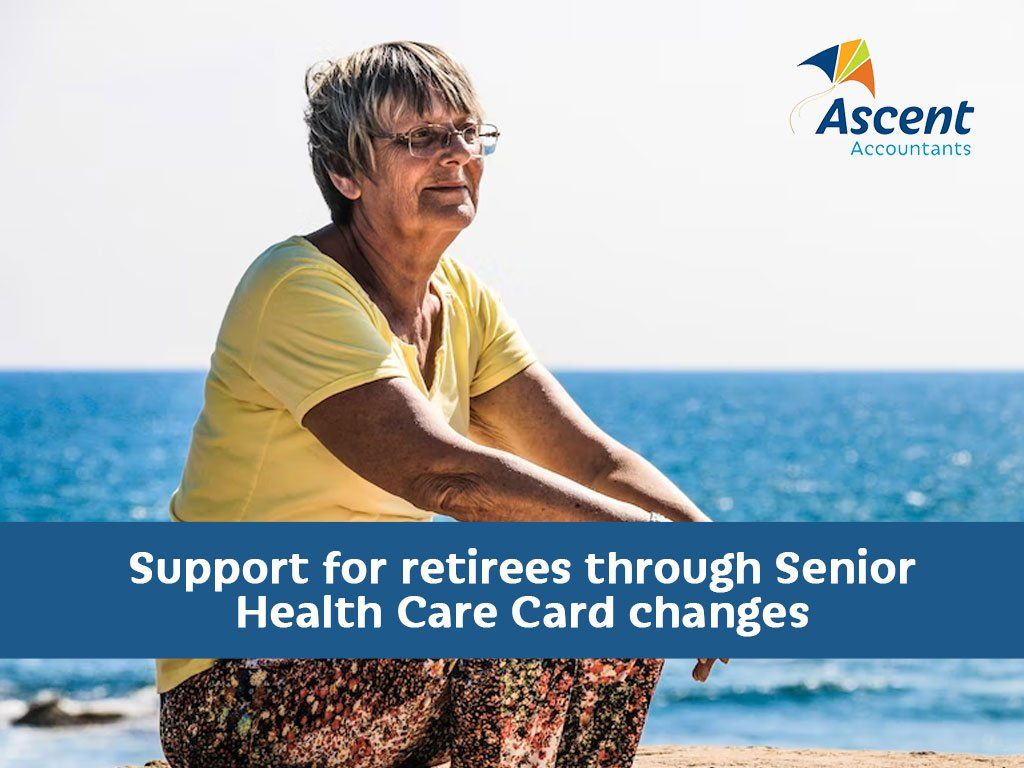Support for retirees through Senior Health Care Card changes

Legislation to increase the income test thresholds for the Commonwealth Seniors Health Card has now been passed by Parliament. This legislation is set to help thousands of seniors access affordable medications and substantial discounts on State Government services.
What’s new
Increased cut-offs.
The change increases the cut-off limits to access the card to $90,000 a year for singles and a combined $144,000 for couples. Those figures will be indexed each year, commencing in September 2023. The Association of Independent Retirees (AIR) welcomed the change, saying the ability to access the card will support many seniors, particularly those feeling weighed down by increasing living costs.
"Income for self-funded retirees doesn't necessarily rise in line with inflation like those on a full or partpension. The savings on prescription drugs alone will save some of them hundreds of dollars a year," AIR’s National Deputy President Margaret Walsh said.
Affordable medications & State Government services discounts.
For seniors with a CSHC or Pensioner Concession Card, PBSlisted drugs which would normally cost $42.50 per prescription are capped at $6.80 per script. There is· also an annual safety net of $244.80 a year — a massive saving. Additionally, if the limit is reached, prescriptions are free for the rest of the calendar year.
When combined with the State's WA Seniors Card, WA residents will enjoy most of the benefits received by age pensioners. That includes lofty discounts on local government charges, water supply charges and other State Government services. According to an estimation from the AIR, in some cases, the combined discounts could be worth up to $7,000 a year.
Don’t miss out!
The card is not automatically issued…
Independent Financial Planner, Emily van Kampen, said that retirees could miss out simply because they won't be aware of their entitlement to get the card in the first place. This is even more true for wealthy seniors. “There's just an assumption by wealthy retirees that they're not entitled to anything from the Government when, in fact, they might be," Ms van Kampen said. "Confusion over what's regarded as assessable income is a big part of it because many think the assessment is based on cashflow when it isn't."
Calculating eligibility.
Centrelink uses a combination of taxable income and deemed income on certain investments to calculate income eligibility for the card. What most people don’t realise is that any money taken out of a taxed super scheme — whether as a regular payment or a lump-sum withdrawal — does not count towards the annual limit. Gross employment income, foreign income, net rental receipts, assessable capital gains and grossed-up share dividends are all part of the annual figure.
Centrelink's deeming system is applied to some money in super, but only to the funds held in an account-based pension. If seniors have money retained in superannuation accumulation accounts, this will be ignored.
Figures to remember.
For singles, the first $56,400 of the money in ABPs is deemed to be earning 0.25% a year and the balance at 2.25% a year. For couples, the combined lower amount of $93,600 attracts the 0.25% rate with the remainder at 2.25%.
A single who has the maximum amount of $1. 7 million in an ABP would have deemed income on the amount of $37,122. That leaves $52,878 to be earned from other investments and employment income before losing access to the CSHC. A couple with a maximum amount of $3.4m in ABPs would have deemed income of $74,628 a year, leaving them with a combined $69,372 a year.
Applying for your Senior Health Care Card.
The easiest and fastest way to apply for your Senior Health Care Card is online through Services Australia. You can also download an 18-page claim form (from the same website), which you can print, fill in, and post. At this stage, online applications require each individual to claim, but the paper version includes a combined claim form for couples.
Each individual also needs a myGov account linked to a personal Centrelink account.
Don’t have a myGov account?
Setting one up might seem complicated, but it’s actually quite easy (if not a little tedious). If following these steps feels overwhelming, we suggest enlisting the help of a friend or family member.
- If your myGov account is not already set up, go to my.gov.au and follow the steps to open an account.
- Once established, myGov will ask you to link any relevant services — this is where you can add Centrelink.
- You have two options to link Centrelink to your myGov account. The easiest way is to obtain a linking code by calling 13 23 07 and selecting option "1''. Alternatively, you can visit a physical Centrelink office with identity documents such as your passport, driver's license or Medicare Card.
- Using a smartphone, download the myGovlD app and establish your identity using documents including things passport, driver's license or Medicare Card.
- Once everything is linked, click, “make a claim" and then "get started" on the concession cards menu. Depending on how you answer the questions, you may have to upload scanned copies of documents to support your claim.
- If your claim is successful, your card will be quickly available in your phone's digital wallet via the Centrelink Express Plus App. A hard copy version will be posted to you as well.
Clear as mud?
Let’s talk about it in more detail. If you’d like to get the full scoop on Senior Health Care Card entitlements for yourself or on behalf of a parent (and how this affects tax), contact us.
Need help with your accounting?








